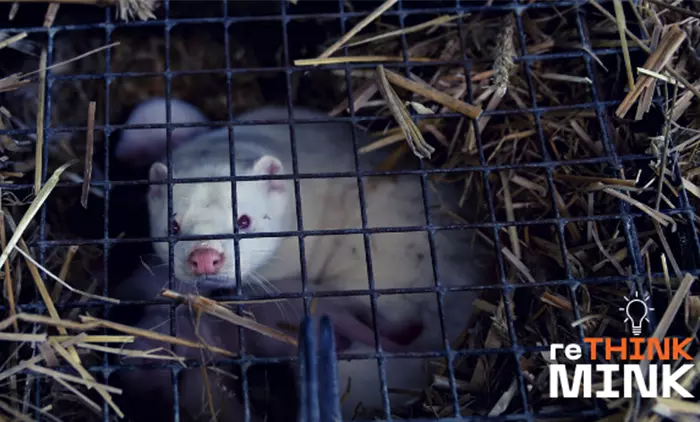
Mink Farming Industry Poses Unique Threat to Public Health
by Scott Beckstead
Many of my fondest childhood memories are of time spent with my grandfather, a mink farmer in the small town of Franklin, Idaho, a short skip to the Utah border. A soft-spoken, kind, and generous man, my grandfather doted on his children, including my mother, and on me and his other grandkids.
Grandpa also doated on his mink. He talked to the mink as we today talk to our dogs and cats, holding them firmly but gently as he stroked and examined their fur. I remember him harshly reprimanding his foreman for treating them too roughly.
Even with his gentle touch and his expressions of affection for the animals, though, there were some unavoidable truths. Mink are raised in cramped, crowded conditions that deprived them of their most basic needs. These wild animals’ suffering is evident in violent behaviors, including cannibalism, self-mutilation, and infanticide.
And the killing of the animals during pelting season could never be called humane. The males, twice the size of the females, were shoved into tiny chutes with a wire floor and a pan of cyanide powder underneath. A timer would be set for seven minutes, and I would wait until their screams and struggles stopped. When the timer sounded, I would open the chute and drag their limp bodies out, often having to unlock their jaws from the wire floor, as many died trying to tear their way out.
After my grandfather’s death in 1990, my grandmother “pelted out” the farm, meaning every last mink was killed and skinned. Her timing was foresighted. Within a few years, the fur industry began a steady decline as consumer demand for pelts waned, mainly in response to growing concern over animal welfare.
There are perhaps only 150 mink farms in operation in the United States today, and those in business face the same pressures my grandparents struggled with. Mink producers no longer supply a domestic market, sending their pelts to China. Gross revenues for the U.S. industry went more $291 million in 2012 to $59 million in 2019. In 2020, they may have dropped another 80 percent.
It is the mink farmers who are now dealing with an unauthorized export from their main trading partner, China — and that’s COVID-19. Mink are unusually susceptible to the virus, and there have been outbreaks of COVID-19 on farms in Wisconsin, Utah, Michigan, and Oregon. Tens of thousands of mink have died of the effect of the virus or killed by mink farmers in an attempt to contain the virus. The outbreaks mirror similar events on mink farms in Europe, and some governments there have embarked on programs to buy out the last remaining operations. The leading fur producer in the world, Denmark is in the process of killing all 17 million mink on over 1,100 mink farms amidst news that its scientists have detected a mutation in the virus that could impede efforts to create a vaccine. Mink-to-human transmission has been documented so the mutated virus is an extraordinary threat.
Given these crises, Animal Wellness Action has proposed to the governors of the top mink-producing states that they coordinate with USDA to phase out the mink farms in a way that fairly compensates the producers and winds down an industry facing headwinds that are too strong to allow forward progress.
I like to think that my grandfather, with his common sense and strong feelings of responsibility for his community (he was the mayor of Franklin for many years), would agree that while this may seem a drastic solution to some, it is the right thing to do.
For the sake of the security of our nation and our growing sensibilities about the sentience of animals, but with compassion for the family farmers in the business, our leaders should move forward with due haste to end the era of American mink farming.
Scott Beckstead, a resident of Sutherlin, Ore., is director of campaigns for Animal Wellness Action and the Center for a Humane Economy.
Other NLEC News

The killing of mink during pelting season could never be called humane. The males, twice the size of the females, were shoved into tiny chutes with a wire floor and a pan of cyanide powder underneath.
This cruel and evil practice must be stopped everywhere. It’s inhumane and they suffer a lot.
There is a mink farm not very far from where I live. And every year, more “huts” are built to house the increasing numbers that are being bred. What is wrong with faux-fur? These poor little creatures suffer a lot. I cannot imagine working a job whereby someone kills small animals so that big people can wear their skins. I guess the only enjoyment comes from the big checks that roll in from the people who buy the end product. When the world was created, animals were hunted for food and any other part of the animal that was left, like the hide, was used to cover the body for warmth. But humans can go into most clothing stores to buy what they need, and they don’t have to kill a tiny little animal to put on that coat, or make a coat out of many of the tiny little animals.
Wear your own skin. So cruel and inhumane. Humankind????????????